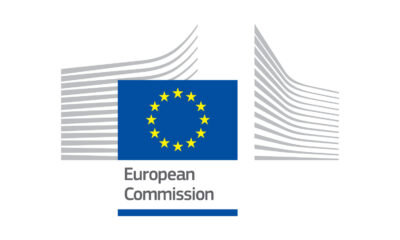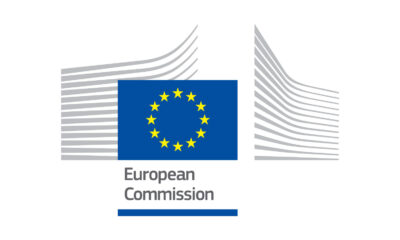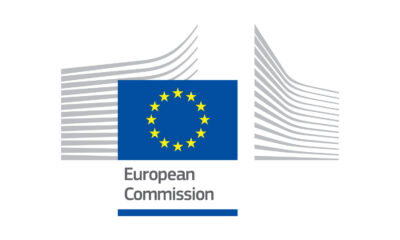Travel
Eurostar Snow: Take the sustainable route to the Alps this winter with this new ski train
Launching in December, Eurostar Snow offers a sustainable route to the slopes.
If you prefer ski holidays to beach breaks, get ready to hop aboard the Eurostar Snow train.
Launching on 16 December, it will whisk winter sports lovers from London to the French Alps in a matter of hours.
The service will run until 4 February, connecting Lille with the snowy peaks of southeast France.
Where can you go with Eurostar Snow?
Eurostar Snow connects the UK capital with the French Alps via Lille.
After taking the train from London St Pancras in the UK to Lille in France, you can switch to the service for Bourg-Saint-Maurice, calling at Chambéry, Albertville, Moûtiers-Salins-Brides-Les-Bains and Aime-la-Plagne along the way.
Eurostar Snow will depart every Saturday throughout winter and return every Sunday, with a total journey time of around eight hours.
How much does Eurostar’s snow train cost?
Standard tickets on Eurostar Snow from London to the slopes start from £99 (€116) each way during off-peak dates (13 January to 4 February) and £149 (€174) on peak dates (16 December to 7 January).
Tickets come with an allowance of two large bags and one handbag, plus one pair of skis or one snowboard in a protective case. There are no liquid restrictions on board.
Where to go skiing in Bourg-Saint-Maurice
Located in the Auvergne-Rhône-Alpes, Bourg-Saint-Maurice – often shortened to Bourg – is a paradise for winter sports lovers.
It is the gateway to the Paradiski ski area, home to Les Arcs, Peisey-Vallandry and La Plagne.
From the town’s train station, coaches run regularly to neighbouring ski resorts including Val Thorens, Val d’Isère, Courchevel, La Tania, Tignes, Meribel and Les Menuires.
Packed with five star hotels and Michelin star restaurants, Courchevel is best suited for luxury travellers, while Les Menuires and La Tania offer more affordable options.
If you’re in it for the apres ski, head to Val Thorens, known for its nightlife and events.
Travel
Barcelona to create special selfie zone to curb tourist chaos at Sagrada Familia
In front of Barcelona’s Sagrada Familia, gaggles of tourists pose for selfies. They crowd the pavement before the famous Gaudí-designed basilica and even step into the road for a better angle.
This quest for an Instagram-worthy photo comes at the expense of residents’ daily lives.
For over a decade, locals have lambasted the crowds of visitors that obstruct the passage of pedestrians and hold up traffic around the religious site.
Barcelona city authorities have now unveiled plans to corral selfie-snapping visitors into a dedicated area to ease the congestion.
As one of Spain’s hotspot destinations, it is the latest measure from officials to regulate tourism in the city.
Sagrada Familia selfie space will ‘reconcile tourists and the neighbourhood’
Barcelona city council has announced it will construct a special zone beside the Sagrada Familia where visitors can take a breather – and a selfie – before entering the church.
The 6,200-square-metre ‘anteroom’ will be located between the Nativity façade of the basilica and Plaça Gaudí on Carrer de la Marina.
Until recently, Plaça Gaudí had been exploited by tourists for a TikTok trend that caused considerable disruption.
It involved visitors balancing their phones on metro escalators to film themselves while the iconic monument appeared in the background. The trend led to tourists clogging station exits and was eventually banned.
“The new project helps to resolve a space where it is difficult to reconcile uses between visitors to the temple and the neighbourhood,” the city council said in a press release.
Construction on the gathering zone is scheduled to begin after the summer and be finished by April 2026 to coincide with the 100th anniversary of Gaudí’s death.
The €2.7 million project is part of a wider €15.5 million plan to improve infrastructure and visitor management around the sacred site.
The Sagrada Familia attracts 4.7 million visitors a year and is the second most visited site in Spain, after the Alhambra in Granada.
‘Tourism needs to be serving the city’s model’
Now drawing 32 million visitors a year, Barcelona has previously introduced several measures to curb overtourism.
In 2024, the city launched a €44 million plan to regulate crowds in 16 tourist hotspots by deploying more cleaners and police officers to maintain order and safety.
Last July, the city abandoned its ‘Visit Barcelona’ slogan of 15 years in favour of the new ‘This is Barcelona’, marking a rebranding which shifts the destination away from mass tourism.
Barcelona has also pledged to ban short-term apartment rentals to tourists by 2028 and cap cruise ship disembarkations.
Speaking after the announcement last year, the city’s mayor Jaume Collboni said the decision came in response to the risk of Barcelona becoming a “theme park” devoid of residents.
“Tourism needs to be serving the city’s model, not the opposite,” he added.
Travel
You’ll need to book via app to visit these spectacular beaches in Sardinia this summer
One beach on the Italian island of Sardinia will only be accessible to visitors by booking through an app this summer.
Crescent-shaped Tuerredda beach has already been capping visitor numbers at 1,100 per day since 2020.
The new digital measure, expected to be in place by July, aims to ease the strain on local resources and infrastructure.
Many of Sardinia’s spectacular beaches are protected from overtourism with similar restrictions, with transgressors facing fines of up to €3,500.
The island’s coastline is renowned for its pristine stretches of sand and is frequently voted as one of the top places in Italy for a seaside holiday.
But it has also been suffering due to disrespectful visitor behaviour and overcrowding.
Here are all the places where the island has limited access or introduced regulations to safeguard its most popular beaches.
Spiaggia Rosa: €3,500 for stealing sand
The Spiaggia Rosa, located on the outlying Budelli island, draws thousands of tourists a day in summer to admire its magnificent pink sand. But visitors can only see the picturesque sands from a distance on a boat.
Because of the beach’s fame, it has been closed off to visitors since the mid-1990s after its coveted sand began to disappear. The local government took action after tourists were found to be smuggling kilos worth away as souvenirs.
Local authority regulations now mean walking on the beach will land you a €500 fine, while anyone caught stealing the sand will have to pay up to €3,500.
La Maddalena, Cala Coticcio and Cala Brigantina are capping visitor numbers
In the archipelago of La Maddalena, two beaches now have restricted access. Last year, only 60 people a day could visit Cala Coticcio and Cala Brigantina over the summer.
Travellers needed to book their slot online and pay €3 per person to access the beaches with a guide.
The visitor limit and access fee have not yet been announced this year, but visits will likely need to be booked by contacting a local guide directly like last year.
Several other beaches around the island now only allow access to a limited number of visitors.
In the north, Cala Brandinchi and Lu Impostu will limit numbers to 1,447 and 3,352 respectively between 1 June and 30 September. Visitors also need to book via the San Teodoro app or on the dedicated website.
At Cala Mariolu, 700 people are allowed per day between June and early November.
In Villasimius in the southeast, beachgoers heading to Punta Molentis, Riu Trottu and Portu Sa Ruxi are required to pay to access the car park. Each vehicle costs €10 with an additional €1 for each passenger. Cyclists and pedestrians pay €3.
Staff are stationed at car parks and beach access points to check tickets.
Beach towels banned on Pelosa beach
On the west coast, Stintino’s famed Pelosa beach is now only open to a limited number of visitors per day. A maximum of 1,500 people are allowed to access the beach daily. Last year, visitor numbers reached as many as 4,000 on some days.
Those looking to sunbathe on Pelosa beach need to book a ticket costing €3.50. Regulations also state that visitors can only use beach towels if they place mats underneath them, which trap less sand.
Ogliastra: Time limits for beachgoers
In Ogliastra on the east coast, 300 people a day are permitted on Cala Birìala and beachgoers who arrive by boat can only stay for 90 minutes.
Similarly, visitors to Cala dei Gabbiani are also capped at 300. Last year, visitors had to leave after two hours.
How is Italy clamping down on overtourism?
Sardinia joins several other popular tourist destinations that have introduced restrictions as a result of overcrowding.
Venice now has a booking system and fee to visit the city. In the Italian Riviera town of Portofino, tourists lingering too long and blocking streets face fines of €270.
Travel
Italian rail operator reveals €1bn investment to tackle Eurostar monopoly
Italian state railway group Ferrovie dello Stato (FS) on Tuesday revealed plans to launch a high-speed rail service between Paris and London through the Channel Tunnel.
The service, set to be launched by 2029, will challenge Eurostar’s long-running monopoly on the route between the UK capital and mainland Europe.
FS said that the project, with an earmarked €1 billion, would be carried out in partnership with Spanish firm Evolyn, led by the Cosmen family.
Evolyn announced back in 2023 that it wanted to launch a service between Paris and London. The details of its partnership with FS are not yet finalised.
“This investment is a decisive step forward in FS Group’s vision of building a more integrated, competitive and sustainable European rail network,” Stefano Antonio Donnarumma, FS Group CEO, said in a statement.
“High-speed rail networks are the backbone of efficient and environmentally friendly mobility, and by expanding our presence on key corridors, we are not just investing in infrastructure and innovation, but also in the future of European transport,” he added.
The link between London and Paris could be extended to services via Lille, Ashford, Lyon, Marseilles and Milan, said FS on Tuesday.
The announcement comes after Virgin Group, owned by billionaire Richard Branson, also made a bid to challenge Eurostar’s monopoly last month.
Virgin Group told the Financial Times that it intends to raise £700 million (€820mn) in debt to finance a high frequency service from London to Paris and Brussels, with plans to later extend the route to Amsterdam.
The firm’s plans to run trains along these routes were originally complicated by a spat over an east London rail depot, the only available space to park high-speed cross-Channel trains.
After Eurostar claimed that it had used all available spots, Evolyn and Virgin appealed to the UK’s rail regulator.
In its statement released on Tuesday, FS said that it had received the green light from the UK’s Office of Rail and Road to use the Temple Mills depot.
FS added that it had obtained the necessary licenses and permits in France, and that it was working to increase capacity at St. Pancras. It said that the latter task was “at an advanced stage”.
The Italian firm already runs a high-speed service between Milan and Paris, as well as intercity trains within France.
FS Group also has an established presence in the UK, where it has been present since it acquired train operator c2c in 2017.
Alongside Virgin, FS, and Evolyn, firms Gemini Trains and Deutsche Bahn have expressed interest in accessing the Channel Tunnel route.
Critics of Eurostar’s monopoly argue that increased competition would bring ticket prices down and improve service quality.
-

 Sports6 days ago
Sports6 days agoJannik Sinner, Riccardo Piatti name 4 names for post-Darren Cahill
-

 Sports6 days ago
Sports6 days agoLewis Hamilton, disqualification behind: “Immediately looked ahead”
-

 Politics6 days ago
Politics6 days ago36 000 free EU travel passes for 18-year-olds
-

 Politics6 days ago
Politics6 days agoMSCA awards €608.6 million for doctoral programmes
-

 Health & Society6 days ago
Health & Society6 days agoThe Magic of Mushrooms – Exploring Their Nutritional and Healing Powers
-

 Politics6 days ago
Politics6 days agoEU launches humanitarian air bridge after Myanmar earthquake
-

 Politics4 days ago
Politics4 days ago6 tips to spot and stop information manipulation
-

 Politics4 days ago
Politics4 days agoWinners of 2025 EU prize for women innovators announced









